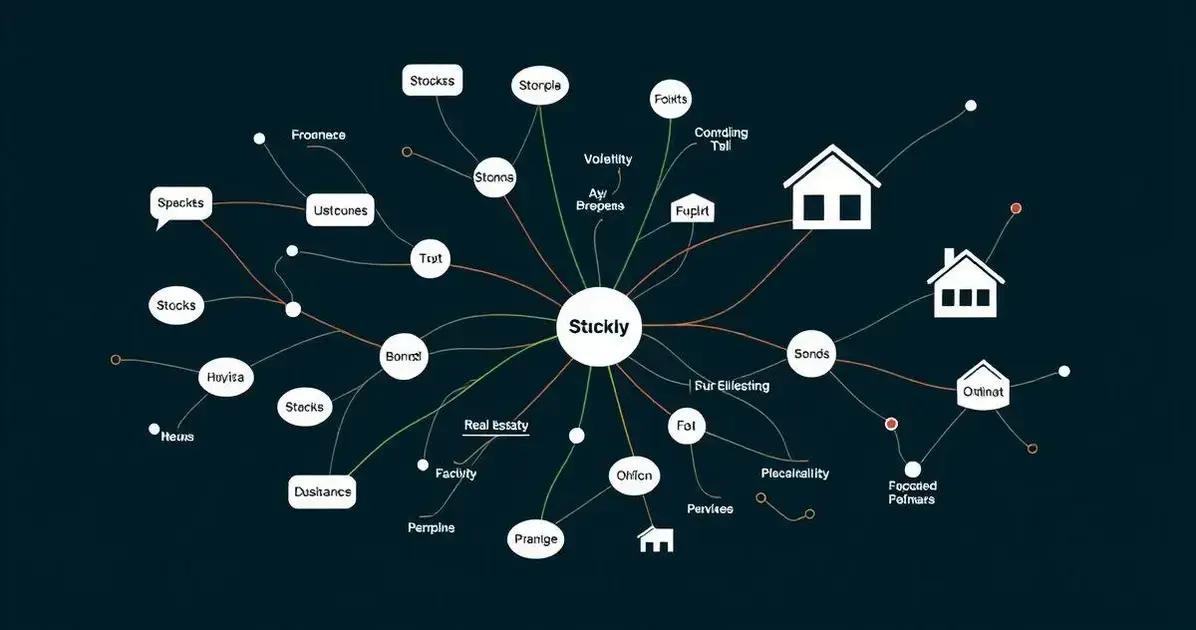Diversification: Unlocking Financial Growth Through Strategic Moves
Advertiser
Diversification in investments is a strategy that disperses risk across various asset types, such as stocks, bonds, and real estate. This approach minimizes the impact of market volatility, maintains financial stability, and enhances the potential for steady returns, making it a vital practice in achieving sustainable financial growth.
Diversification is a powerful strategy to safeguard investments and maximize returns. By spreading your investments across various asset types, you reduce the risks associated with market volatility. This comprehensive guide will explore financial diversification, its benefits, and strategies you can implement today.
Understanding Financial Diversification
Financial diversification involves spreading investments across various asset classes to minimize risk. By not putting all your eggs in one basket, you protect yourself against significant losses. It allows you to balance the unpredictable nature of financial markets.
Asset Classes and Their Roles
Investing in a mix of stocks, bonds, real estate, and commodities creates a buffer. For example, when stock prices drop, bond prices might rise, counteracting potential losses. This offsets risks associated with any single investment type.
Balancing Risk and Reward
A diversified portfolio balances risk with reward. High-risk assets can offer high potential returns but also significant risks. Mixing in low-risk assets can stabilize the overall portfolio value, providing a more predictable growth pattern.
Geographic Diversification
Investing across different global markets can shield you from regional economic downturns. By including international investments, you can take advantage of worldwide economic growth and trends, enhancing your portfolio’s resilience.
Understanding these principles is key to crafting a robust investment strategy, protecting your finances, and maximizing returns over time.
The Benefits of Diversifying Investments

Diversifying investments provides a safety net against market fluctuations. It distributes risk across various sectors, reducing the impact of adverse market movements. This approach ensures that not all your funds are affected simultaneously, preserving your capital.
Stability and Consistent Returns
Investors often seek stable returns. Diversified portfolios spread exposure across different asset types, diminishing the risks of any one investment severely impacting overall performance. This leads to more consistent returns.
Capital Growth Over Time
A diversified portfolio not only protects but also promotes growth. By including a mix of aggressive and conservative investments, you can capture gains from high-growth assets while relying on steady performers for balance.
Reducing Emotional Decision-Making
Investing can be emotional, especially during market shifts. Diversification reduces stress, as balanced portfolios withstand turbulence better. This encourages rational decision-making, averting impulsive actions driven by fear or excitement.
Overall, diversification leverages the strengths of multiple investments, enhancing financial resilience and future-proofing your portfolio.
Diversification Strategies for Modern Portfolios
Diversification strategies in modern portfolios evolve with financial innovation and market dynamics. A blend of traditional and alternative assets can enhance portfolio performance while managing risk effectively. These strategies utilize a mix of stocks, bonds, real estate, and emerging investment vehicles.
Integrating Alternative Investments
Incorporating alternatives like real estate investment trusts (REITs), commodities, and private equity can provide growth opportunities not available through traditional stocks or bonds. These assets often have different performance triggers, diversifying risk further.
Sector Rotation Strategy
Sector rotation involves switching investments between different market sectors to capitalize on their performance cycles. By analyzing economic trends and corporate earnings, investors can shift focus to sectors with strong potential, optimizing gains.
Global Diversification
Investing internationally spreads risk across regions, reducing exposure to local market downturns. Global diversification takes advantage of growth opportunities in emerging markets while safeguarding against domestic economic fluctuations.
These strategies highlight the importance of a well-rounded, dynamic approach to investment that adjusts to market changes and embraces new opportunities for financial growth.
Risks and Challenges in Diversification

Diversification offers numerous benefits, but it also comes with its own set of challenges and risks. Understanding these can help in crafting a balanced investment strategy. A major risk is over-diversification, where adding too many assets dilutes potential returns. This can make a portfolio cumbersome and difficult to manage effectively.
Correlation and Risk Management
Assets within a portfolio should have low correlations with one another to spread risk adequately. However, failing to understand or measure these correlations can lead to unexpected losses if assets perform similarly during downturns.
Costs and Complexity
Diversifying across numerous investments often incurs higher transaction costs and management fees. This can reduce net returns over time, especially if the diversification strategy involves frequent rebalancing.
Market Volatility Impact
Even the most diversified portfolio may not be immune to global market volatility. Economic events can impact multiple asset classes simultaneously, posing a threat to the perceived safety of a diversified strategy.
Investors must weigh these factors carefully, as diversification alone isn’t a foolproof safeguard against investment risks.
Mastering Financial Growth Through Strategic Diversification
Utilizing diversification is essential for unlocking financial growth and security. By spreading investments across various asset classes, investors manage risks while seeking consistent returns. Modern strategies, like integrating alternative investments and global diversification, provide resilience against market fluctuations.
While challenges such as over-diversification and market volatility exist, understanding and carefully managing these risks can enhance portfolio performance. Thoughtful planning and ongoing assessments ensure that diversification strategies are aligned with financial goals.
Embracing diversification is not merely a protective measure; it is a strategic move towards achieving sustainable financial progress. With the right approach, diversification unlocks new avenues for growth and stability.
FAQ – Frequently Asked Questions About Diversification in Investing
What is the key benefit of diversification in investments?
Diversification spreads risk across various asset classes, reducing the impact of market volatility on your overall portfolio.
How can I start diversifying my investment portfolio?
Begin by mixing different asset types such as stocks, bonds, and real estate, and consider including international investments for a broader risk spread.
What are alternative investments?
Alternative investments include assets outside traditional categories, such as real estate, commodities, and private equity, offering unique growth opportunities.
Can diversification eliminate all investment risks?
No, diversification can’t eliminate risks but it significantly reduces them by ensuring not all investments react the same way in adverse conditions.
What is over-diversification and how can it affect my portfolio?
Over-diversification occurs when too many assets dilute returns and increase complexity, making the portfolio harder to manage effectively.
How does global diversification contribute to my portfolio?
Global diversification spreads investment risks across different regions, protecting against local economic downturns while capitalizing on international growth.






